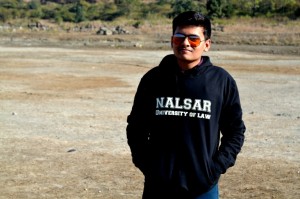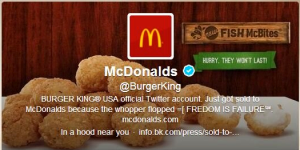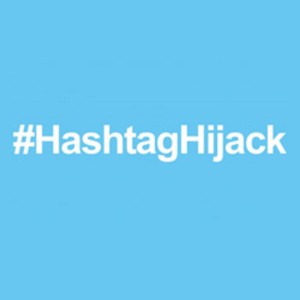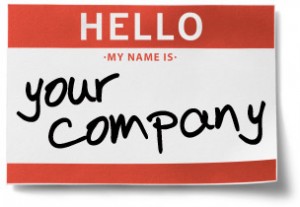In this Blog Post, Abhiraj Thakur, a student of NALSAR University of Law writes about a recent phenomenon in the corporate world, i.e. Brandjacking.
Brandjacking
As the name suggests, it is made up of combining two words: Brand + Hijacking. The social network, while bringing people together also makes them vulnerable to a large number of threats. As the technology is rapidly advancing, so are the different techniques through which people often engage in unscrupulous activities and misuse the global connection. Brandjacking is a relatively new term that for the first time came into limelight eight years back. In colloquial terms, brandjacking can be referred as an unauthorized takeover of someone’s online identity by some other person. Today many companies of the world are present on social media platforms such as Facebook and Twitter; they actively advertise their products on these platforms. Brandjacking occurs when a particular advertisement, feature, quality, etc. of a product is used by some unknown party to gain commercial benefit. The unknown parties make use of the ‘Brand name’ of foe company self-benefits. In many cases, brandjacking is done to make illegal benefits but many times it is done for other malicious and hostile reasons. The effects of brandjacking on the host company (brand jacked) are many; it may range from huge financial losses to facing the wrath of negative publicity and losing the consumer base in the long run. Thus Brandjacking today has become a major issue in the corporate arena.
Brand Assassins
There are many hacking communities today which carry out brandjacking on monetary terms, by charging the suitable fees these people infiltrate the account of the targeted company and manipulate it as desired by the customer. These people are popularly referred to as ‘Brand Assassins’. These people usually operate through intermediaries and so most often can avoid the clutches of Law.
Forms of Brandjacking
Total Takeover
This is the most common form of brandjacking that occurs today. It is also the most dangerous one. The total takeover is done through hacking into the account of targeted company; it is also done through phishing. The most famous instance of a total takeover was in 2013 when the Twitter account of Burger King was hacked and revamped with the branding of McDonald’s. This type of brandjacking is considered the most dangerous as because the damage is imminent as the messages from the hacked account are transferred immediately to the followers. As in the Burger King’s case, the advertisements and other promotional activities were rebranded as McDonalds and so it resulted in negative publicity for the brand.
Impersonation
Impersonation is done maliciously to bring losses to the targeted company. This is done by all together eliminating the account of the target and then setting up a new account is made taking distinct and unique features of the deleted account. The product is thus rebranded under a different name. This is done to gather huge consumer base in the short span of time, taking unfair advantage of the brand name of the targeted company.
Ways in Which brandjacking is done on different social media
Facebook: It is done by hacking the profile of target or making a new account. The brand assassins start carrying out activities under the umbrella of the fake account; these activities may include such as posting false reviews of the product, making false surveys for the brand or messaging the followers directly about the product. These fake accounts also start answering consumer queries; this causes huge losses to the company. In 2013, a fake a Facebook account in the name of ExonnMobil was opened that claimed to represent views of the company and started posting false allegations such as making under quality product on the company.
Twitter: It is done through fake tweeting on behalf on behalf of the company and using false hash tags. Also is sometimes seen that viral hash tags are made by hackers to lure a large number of consumers in a short span of time. In 2010 a fake Twitter account started posting fake tweets on behalf of British Petroleum, these tweets ranged from false allegations of corruption in the company to an official apology for Deep Horizon oil spill incident.
The problem with social media is due to time constraints people seldom go into the details of the news and mostly believe what they see on hand.
What to do when brand jacked?
If a company feels that it is brandjacking on a particular social site. It has the right to contact the servers of the site and get the account seized as soon as possible. Most of the social media houses today have the policy of seizure of account when found indulged in malpractices. For this to happen the Brand alleging to have been the brand jacked need to prove itself to be the genuine party.
Brandjacking and Indian Laws
There is no specific recognition of brandjacking under Indian laws as of today. However, the Indian courts on few occasions have dealt with allegations of brandjacking. In the case of Yahoo! Inc. v. Akash Arora and Another, The plaintiffs Yahoo Inc. alleged unauthorized usage of their domain name to provide internet related services and not the internet itself. The Delhi High Court ruled for Yahoo considering the usage of the domain name as unauthorized exploitation of the brand name of the company and granted then compensation. This case brought into highlight the need for specific laws in the country to protect Brand names on the Internet.
After that in many cases, the courts have recognized spamming. Phishing and other internet malpractices but not brandjacking. In cases dealing with usage of the brand name, the courts have awarded compensation for infringement of trademarks under the IP laws.
How to prevent Brandjacking?
Through Intellectual Property laws
Registering the product under copyright and trademark: It is the best method to avoid brandjacking. Having trademark for any specific aspect of the product makes any unauthorized usage of it a punishable offense under the IP laws in India. By the virtue of Section 2(1) of the Indian Trade Marks Act, 2000, one can have trademark registration of any “symbol/sign capable of distinguishing goods and services of one person from another, any word (including personal names), design, numerals and shape of goods or their packaging as trademark. Courts in India have accorded protection to product titles, advertisements and names under the trademark law in the past.
In the case of Star India Private Ltd. v. Leo Burnett India Pvt. Ltd, The plaintiffs star India alleged that a commercial made by the defendant company that of a detergent was very much similar to one of the then operating soap operas of the channel. Star already had copyright of the show and thus alleged infringement of copyright. This was the first case that dealt with character merchandising in India. The court did not award damages to the plaintiff as the courts are not aware of brandjacking. However, the jurisprudence has grown over past years. Also, new laws in the field of Information technology are helping to take strict measures to curb the practice of brandjacking. The 2008 amendment to the IT Act 2000 helps in taking down fake accounts operated in the name of the target company.
Through use of Search Engines and other protection software
Today there are many powerful search engines in the market that can help a corporate when brandjacking. These search engines can sort up and present all the references of a company’s name, product’s name over a particular period. This becomes helpful in stopping the rapid spread of false information on the internet. There is also software available that can accurately track down the sources of these references, and can prove helpful in finding the culprit. Some of such software are Social Sentry and Postrank.
Having Safety Precautions in Place
It is necessary for corporate of today have certain guidelines dealing with their presence on social media. Having an eagles’ eye on the people responsible for the brand presence of the company on the internet is necessary. Trusted hands shall be given this duty. Having knowledge of the extent of the presence of the company on different social networks is desirable. Many corporates today have active brand management units that look after and regulate the presence of the company on social media. Lastly having internal vigilance for a corporate is necessary.
Effective Use of Social Media
Many companies active on social media platforms today try to build a community of followers. This is done to strengthen the brand name in the long run and have a network of loyal customers who can be in times of brandjacking help in mitigating the downfall of the brand.
Conclusive remarks
Brandjacking is popularly called the ‘latest corporate crisis,’ in has caught eyes of many in recent times. In the fast-expanding era of internet, such practices pose threat free market practices. Today in our country we see new start-ups every other day, these start-ups are creations of human mind and sound application of skills and provide an incentive for the youth to do something new. Malpractices such as brandjacking can prove detrimental to this incentive if gone unchecked.















